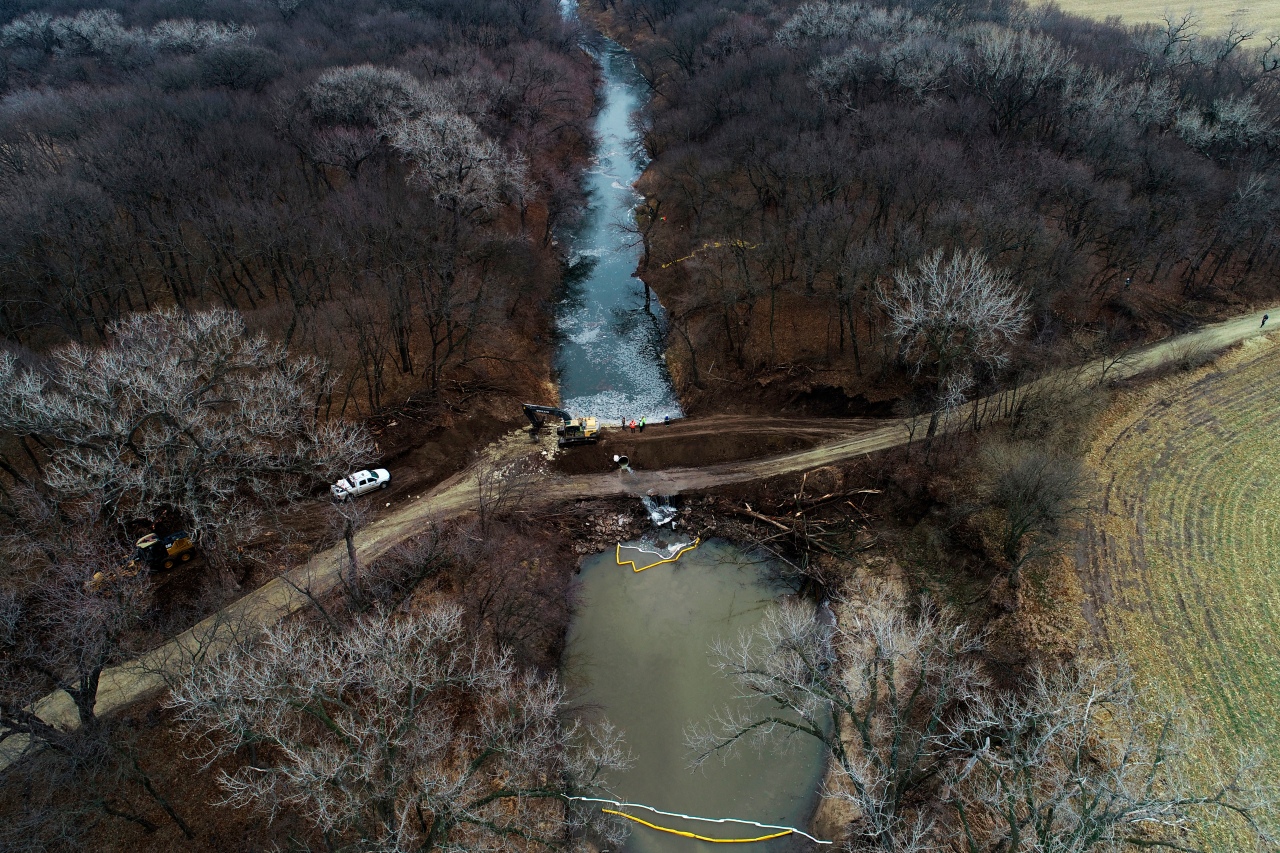WASHINGTON COUNTY, Kan. — A new report has revealed the cause of the Keystone Pipeline oil spill in Washington County, Kansas, last year.
Canada-based TC Energy released its report on the Milepost 14 incident on Thursday, KSNT reports. It presents the initial findings of an investigation into the cause of the oil spill, which dumped a estimated 588,000 gallons of oil in a Kansas creek.
Investigators conducted an independent analysis of the broken pipe, saying the leak was caused by several factors. These include the bending stress on the pipe and a weld flaw on a pipe when the fit girth weld was completed at a manufacturing facility.
The weld defect resulted in a crack that grew over time as a result of bending fatigue, which eventually resulted in the pipe breaking. The cause of the bending stress is still under investigation, according to TC Energy.
Metallurgical analysis found no problems with the strength or material properties of the manufactured pipe or fitting, according to the report. The pipeline performed within its operational design and maximum design operating pressure.
“Our focus continues to be the safe operation of the pipeline system. Additional operational mitigation measures, such as reduced operating pressure, are in place to support the safe operations of our system while we continue our response and investigation. Our team is developing a remediation plan, including an analysis of other areas with potentially similar conditions, the use of additional in-line inspections and subsequent operational mitigations.”
Excerpted from TC Energy’s February 9 statement
The report states that TC Energy revised the volume to 12,937 barrels from the original high estimate of 14,000 barrels. The revised volume is the actual measured volume of crude oil injected during the refilling of the pipeline system upon its safe restart.
The Keystone oil spill was reported to be under control as of December 13after releasing thousands of gallons of oil into Mill Creek.
This has raised alarm among environmentalists who feared the environmental impact of the spill and what impact it would have on the Kansas River. The damaged pipeline section was restored to service on December 29.
To read the TC Energy report in full online, click here.
